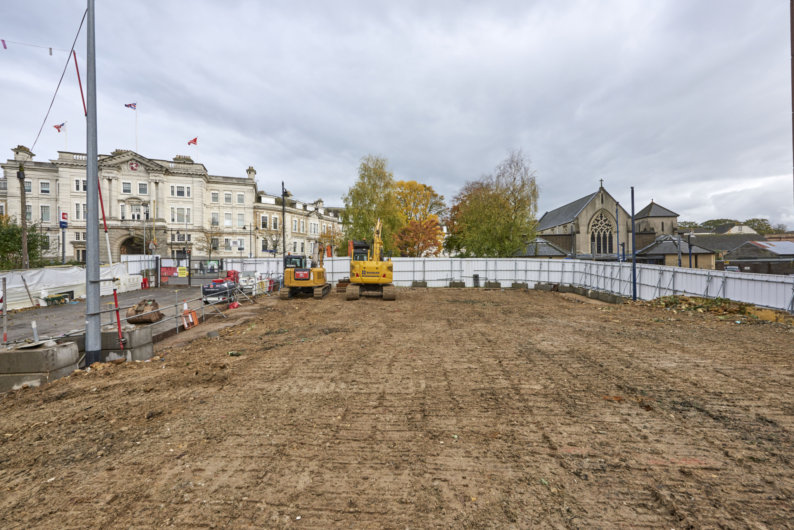Maidstone East demolition project completed for Network Rail
Posted on in Company News
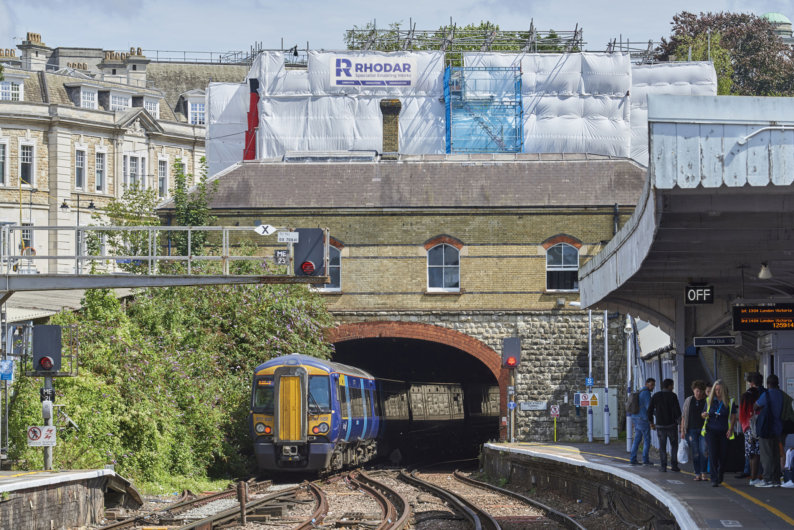
Rhodar has completed a 26-week project to remove asbestos containing materials (ACMs) from and demolish the derelict Old Vic pub, which was situated on top of a live railway tunnel, above one of the South East’s busiest railway lines connecting the area with London.
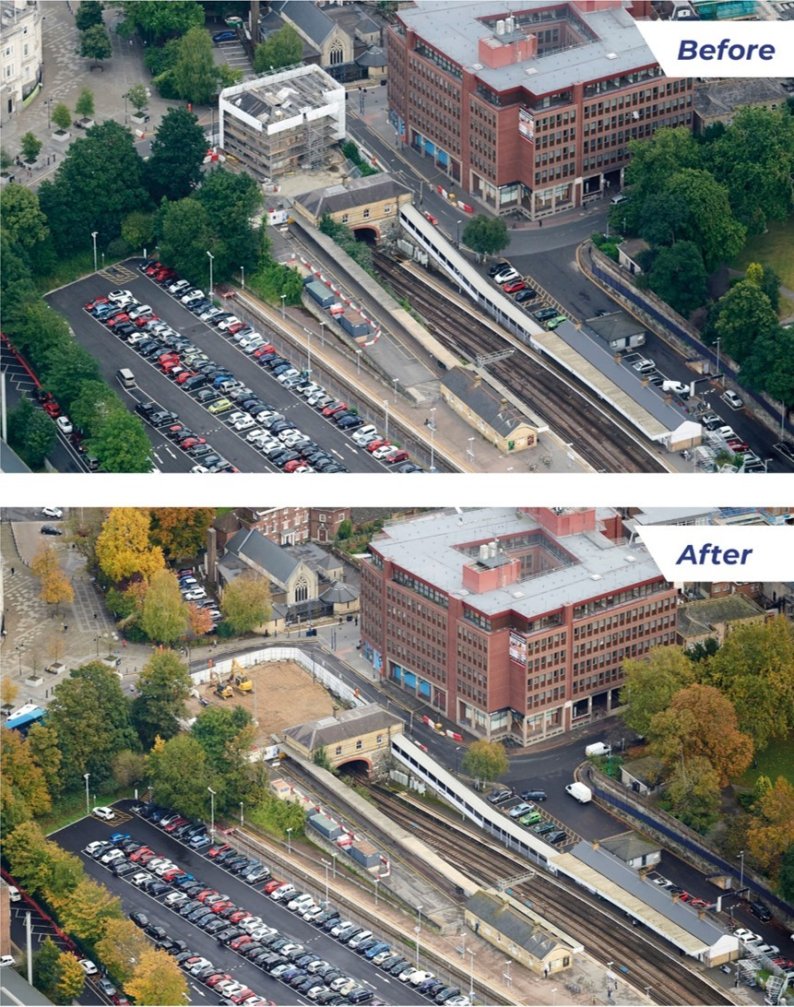
Further enabling works undertaken included the design and installation of a waterproof membrane to the exposed tunnel arch and permanent fill solution to the basement surrounding the tunnel, ready for the following development consisting of a new station forecourt and entrance to Maidstone East Station.
Having been derelict for over ten years, and with a considerable amount of weather damage compromising the internal structure, Rhodar was appointed as principal contractor directly by Network Rail and tasked with asbestos removal and the coordinated controlled demolition of the building.
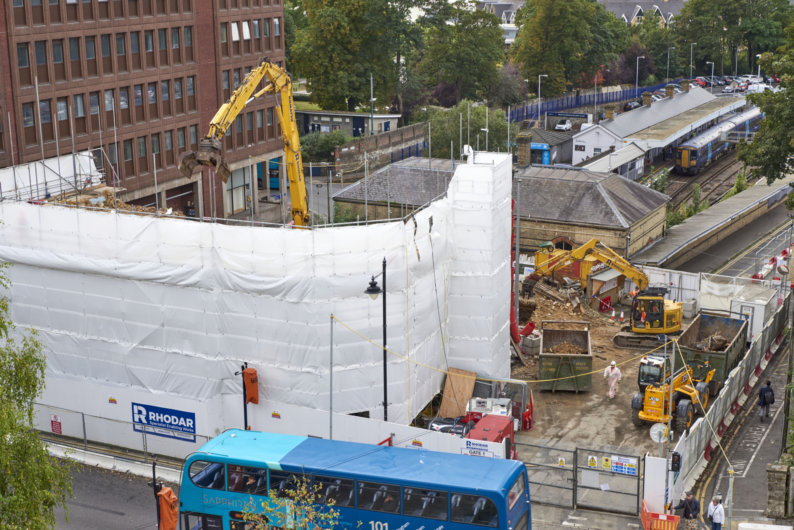
Due to the building’s position over a live railway line, the demolition had to be carefully planned and managed to minimise any stress or impact placed on the Week Street rail tunnel below. Prior to demolition Rhodar’s expert team began by removing all timber flooring from the ground floor to allow the exposed basement to be backfilled with 6F2 crushed concrete.
The basement voids surrounding the tunnel were filled to a height of 600mm above the crown of the tunnel, which added weight to the tunnel to compensate for the reduction in applied loads from the demolition of the building and also acted as an ‘impact mat’ to evenly spread any excess loads across the whole tunnel structure. This allowed for a 47-tonne high reach excavator to be positioned over the tunnel at the rear of the site, with its 28m reach being used to take the building down floor-by-floor, negating the need for any internal access by personnel.
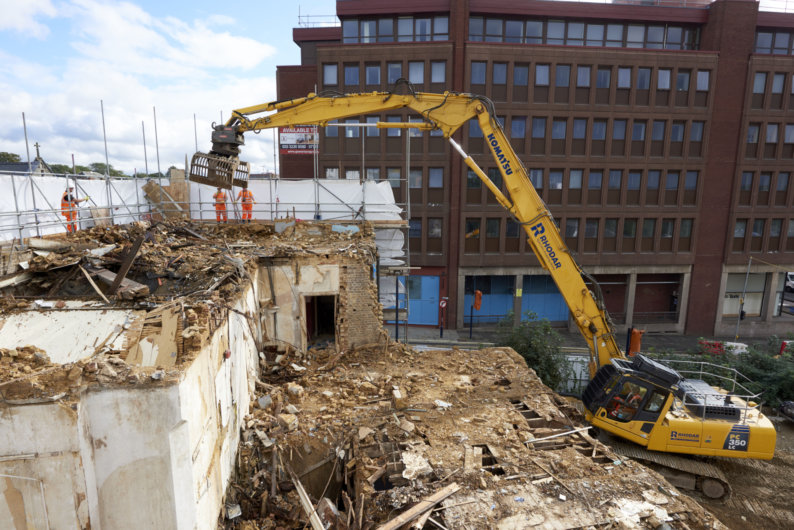
Due to the limited internal access available and the potential for unknown asbestos being present within the material being removed from the floors and internal walls, each load removed by the excavator was segregated and inspected in a lay down area by asbestos trained operatives under a watch and brief process at ground level. Any hazardous materials discovered were removed by hand and disposed of as asbestos waste.
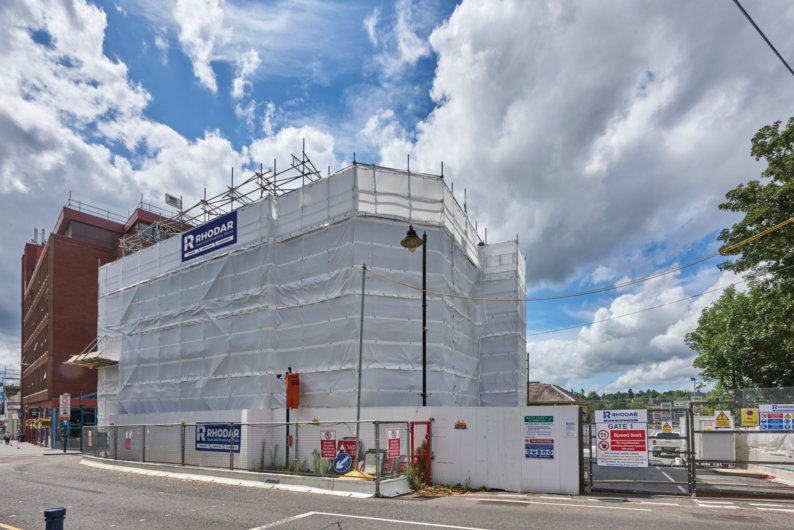
A fully designed scaffold was erected around the building and fully monoflexed to give safe access to the roof and upper floors. This was later adapted to act as a demolition screen to ensure safe working and to minimise any disturbance from dust and debris to the local area. With the site situated next to the town’s main station, adjacent to the shopping centre and on a busy thoroughfare for both traffic and pedestrians, Rhodar deployed several operations to minimise disruption, including traffic management solutions and overnight town centre road closures to allow delivery and collection of large excavators and plant.
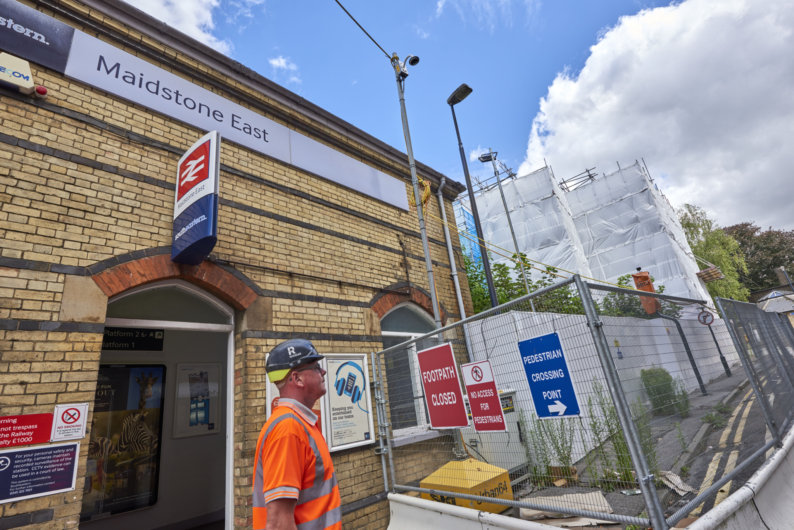
Andrew Fisk, director of demolition at Rhodar, said: “This high-profile project at the heart of Maidstone included a live railway line, tunnel structure and the need to avoid any disruption to Network Rail and the surrounding areas, combining to add a further degree of complexity.
“The team created a bespoke project plan for Network Rail to ensure that the demolition was delivered to the highest standard in a safe and controlled way, setting the foundations for the next stage of development at Maidstone East railway station.”
